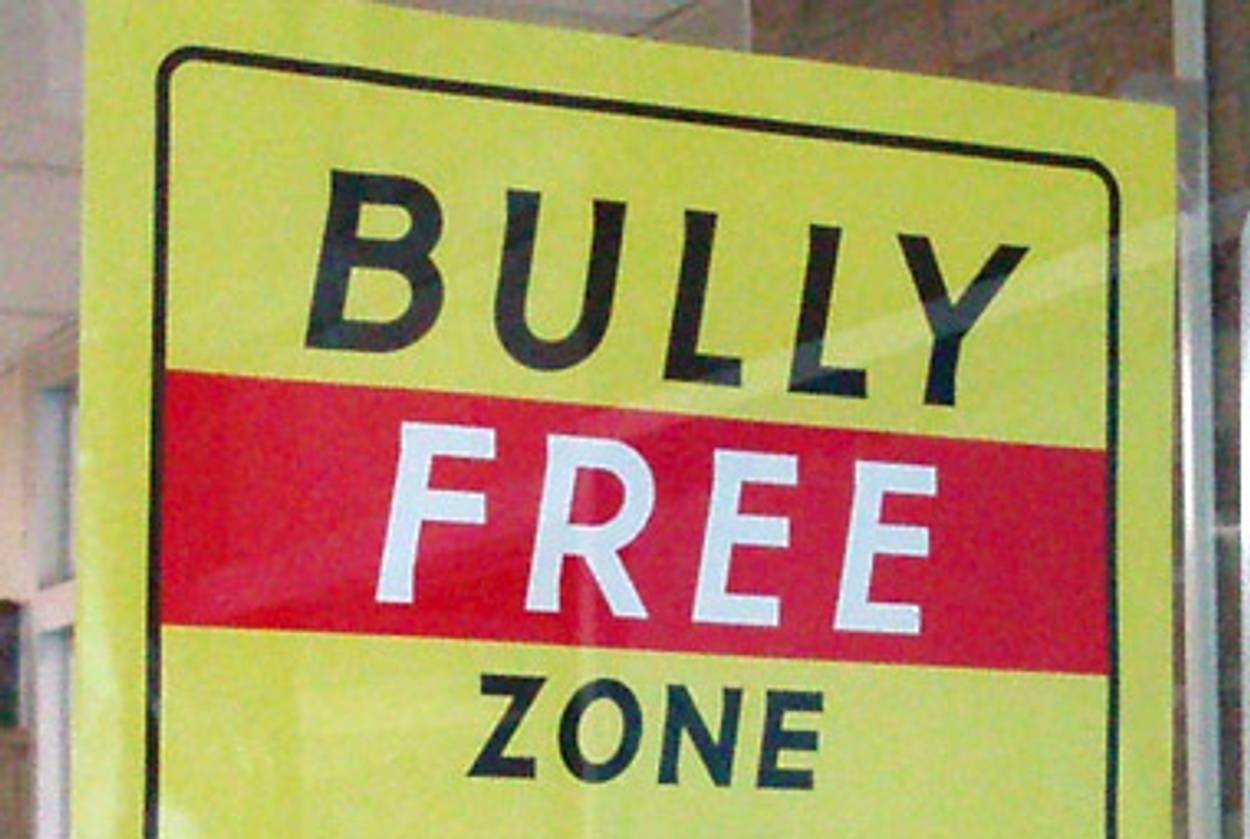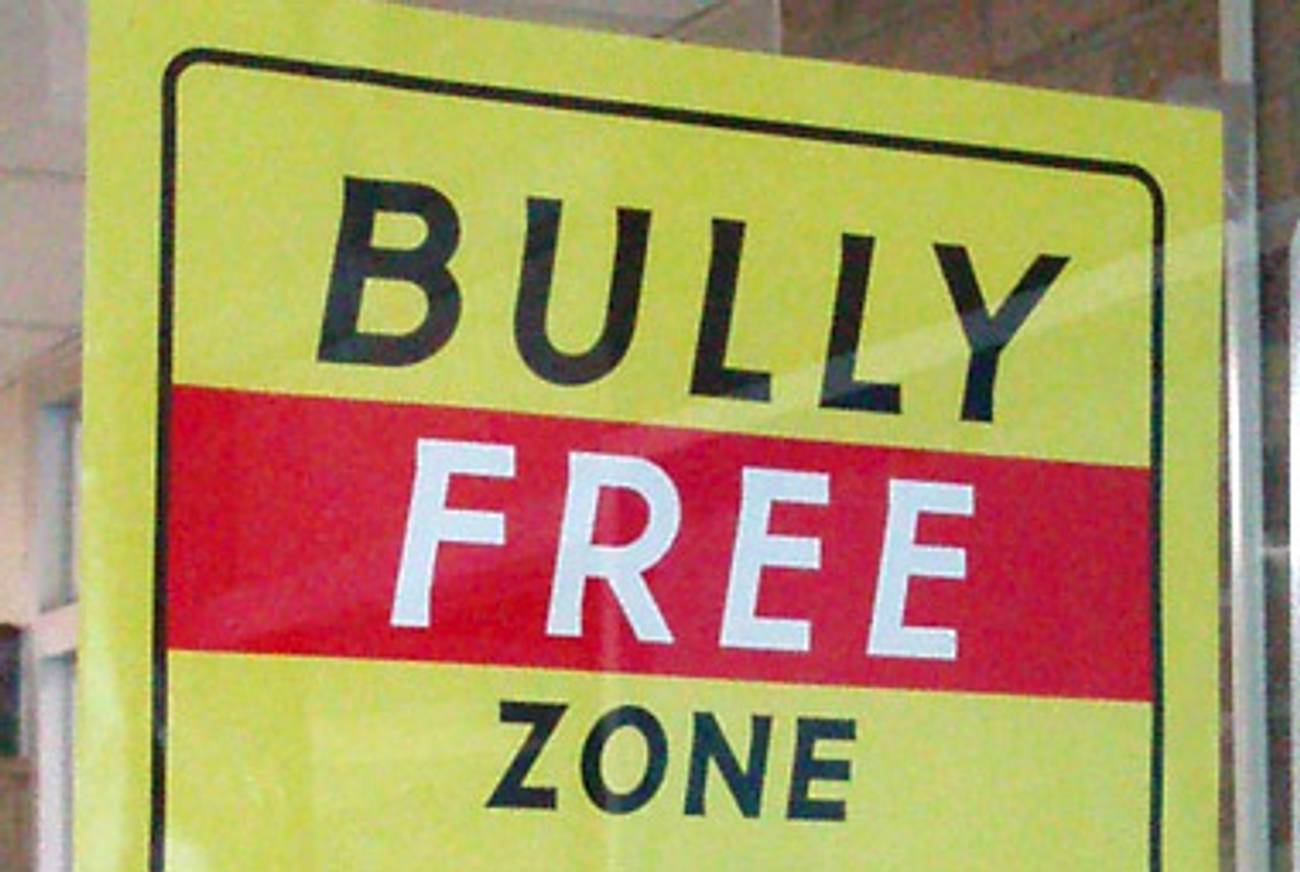The Meaning of Life
In elementary school, it’s girls gone vile




My seven-year-old was recently telling me about a third-grade power play. At lunch in the cafeteria last week, one little Queen Bee (let’s call her Girl X) imitated a less-popular girl’s speech impediment. After mocking her for a while, Girl X asked Girl Y, “Why don’t you talk right?” Girl X’s best bud snickered appreciatively.
“And what did you do?” I asked Josie.
“On the way back from lunch I told Girl Y, ‘Just ignore Girl X,’” Josie told me. “I said, ‘She’s so mean she’ll only get meaner and scarier if you react to her.”
Was that a good answer? Should Josie have intervened in the bullying, telling the Mean Girl to cut it out? Should she have asked the Mean Girl’s best friend what, exactly, was so funny? Should she have engaged a teacher or lunch monitor, thus gaining a reputation as a meddlesome tattling geek? How should teachers, administrators and parents deal with teasing and taunting that happens outside the classroom setting?
I have no clue.
There’s no question that kids can be breathtakingly cruel. According to “Hostile Hallways: Bullying, Teasing, and Sexual Harassment in School,” a 2001 American Association for University Women (AAUW) report based on a national survey of 2,064 public school students, eight in 10 students have experienced some form of harassment in their school lives. But hey, just listen to Josie, sharing a typical sneer from the elementary-school world:
So I wondered: Is there a way to foster bullying-prevention in a Jewish context? Apparently, yes. In 2006, through funding from the Jewish Women’s Foundation of New York, Professor Shira Epstein at the William Davidson Graduate School of Jewish Education at the Jewish Theological Seminary launched the “Addressing Evaded Issues in Jewish Education” program. (“Evaded curriculum,” a term coined by the AAUW in 1992, means topics students grapple with constantly in their daily lives – gender, body image, bullying and more – that aren’t usually addressed at all in the classroom.) Epstein has also written a curriculum for Jewish Women International (JWI) called “Strong Girls, Healthy Relationships: A Conversation on Dating, Friendship, and Self-Esteem.”
“Bullying is a reality,” says Epstein. “But we need to talk about the whys of bullying. We can’t just be reactionary, talking about punishment. We need to look at the larger culture that fosters bullying. The hard work comes in mindfully creating a culture in which we can be supportive of each other. How do we help girls think about what it means to build sisterhood?”
In Evaded Issues’ online resource guide, Epstein writes about the way one Jewish Day School, Hannah Senesh Community Day School in Brooklyn, addressed subtle forms of bullying – teasing, cliques and exclusionary practices – in school. The head of the school chose to use the Bullyproof curriculum, produced by the Wellesley College Center for Research on Women.
“Although Bullyproof is a secular curriculum,” Epstein writes, “the work carries a Jewish theme, the relationship beyn adam l’havero, between two people.” The school worked to make the curriculum explicitly Jewish by culling Judaic texts for stories, quotes, and examples of bullying and what we can learn from them. The younger grades looked at illustrations from Torah and Pirke Avot (Sayings of our Fathers); older grades looked at the Nevi’im (Prophets) and Ketuvim (Writings) as well as Talmudic texts. Did the program make bullying disappear? No, but former head of school Susan Weintrob says that it did make teachers act more quickly when they saw bullying in action. “It is one thing to recognize bullying,” Weintrob remarked, “but it is another to know how to deal with it.”
In her work, Epstein uses the stories of Sarai and Haggar to talk about shifting power balances. “Sarai was mean to Hagar because she suddenly felt low in status and was trying to get her power back!” Epstein points out. “She needed someone else to feel low so she could feel high. We want girls to understand that status isn’t static. It moves quickly.” Epstein also uses the story of Vashti as a way to explore statuses, incorporating movement and visual drama so that kids can feel emotions and power shifts in their own bodies. “In one session we portrayed Vashti as a beggar on the ground and everyone was ignoring her. One girl said, ‘She was up here and now she’s down low’ – she used her body to show how it must have felt for Vashti.” The story of Amnon and Tamar illustrates issues of “having your voice silenced, and how to be a supportive friend.” The girls can use all these stories to reflect on their own emotions and experiences. Epstein laughs ruefully, “Unfortunately, a lot of our texts show deviousness and power plays! But that means they can provide a learning experience: How do we shift to a language of partnership, equality, support, friendship?”
And we parents, sadly, can be hindrances rather than helpers. At Hannah Senesh, Weintrob noted, teachers were excited to incorporate the program, but parents weren’t. Unfortunately, that makes sense to me. Pondering my kid being bullied, being a bully, or (perhaps worst of all) being a follower – the girl who laughs when her Queen Bee friend teases the kid with the speech impediment – makes me shut down like a garage door. Ack! Let’s talk about what you learned in math class instead! “It’s hard for adults to think about what it was like to be young,” notes Epstein. “It touches on a lot of our own issues we haven’t completely worked through from our pasts and makes us uncomfortable.” Indeed, my mom reminds me of how I wept my way through junior high, where I was at the periphery of the popular circle and sometimes got snubbed. I don’t want to explore my unresolved childhood crap! But this ostrich-y tendency also lets us excuse our kids’ bad behavior, or rush to blame other kids and/or their over-reactive helicopter parents when our own kid is cruel.
A further complication: society sends wildly mixed messages about female anger. Girls are supposed to be sugar-and-spice, and the stereotype is that girls turn anger inward (they cut their own skin, they experience depression and eating disorders at greater rates than boys do). But is that true? Why do we so love hearing stories and seeing Lohan movies about Mean Girls if girls either a) aren’t as mean as boys or b) turn their anger on themselves rather than others? It’s all so confusing! The upshot: It’s not productive to blame girls for being cruel when they’re growing up in a culture that so frequently disempowers and devalues them.
So nu, what do we do? Lyn Mikel Brown, a professor of Education at Colby College and author of Raising Their Voices: The Politics of Girls’ Anger (Harvard University Press, 1998) and Girlfighting: Betrayal and Rejection Among Girls (New York University Press, 2003), offers parents and educators 10 ways to move beyond typical bullying-prevention efforts. Many dovetail with Epstein’s suggestions: Stop demonizing kids, consider the culture that bullying takes root in, let kids feel themselves to be potential leaders who can build their own coalitions, don’t issue top-down dictates.
Does it really matter whether boys or girls are meaner? I‘ll let Josie have the final word.
Marjorie Ingall is a columnist for Tablet Magazine, and author of Mamaleh Knows Best: What Jewish Mothers Do to Raise Successful, Creative, Empathetic, Independent Children.
Marjorie Ingall is a former columnist for Tablet, the author of Mamaleh Knows Best, and a frequent contributor to the New York Times Book Review.